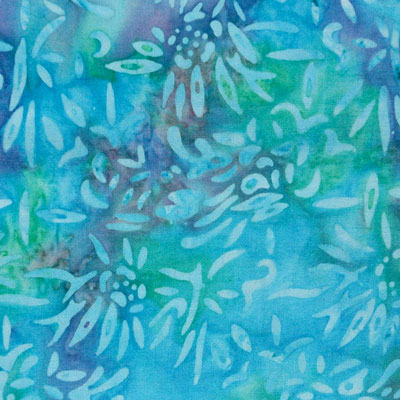
Hi Folks

A few days ago, we started talking of batik fabrics, inspired also by our irresistible promotion - still on, until Monday, March 31st, included - on all
these fabrics, now with an amazing 25% off!Now, we’d like to get you a little closer to the hand technique, still used today, to craft these cottons. Though the origins of such technique haven’t been assigned a precise, some fragments of Ancient Egyptian linen, probably used to bandage mummies, were found showing signs of this technique and they date back to the 4th century. Also, we know that this way of dyeing fabrics is called “
reserve dyeing”: i.e. a method using the partial waterproofing of the surface to dye, through materials such as wax, to achieve amazing patterns and color variations, just because the “reserved” - or, better said, preserved - part covered by the wax keeps its original color, while the “uncovered” part gets the new shade.
Wax is definitely the most used waterproofing material, most of all in the Indonesian Islands, where the fabrics selected to manufacture batiks are waxed on both sides, so that they don’t have a front and back: a great plus, of course, when you’re going to use these wonderful fabrics for the most different projects of creative sewing and quilting

Flowers, leaves, fish scales, geometrical patterns and dots, rays, triangles, drops and multi-color motifs are the most widespread subjects for cotton batiks and cotton is selected with the most regular weft, so that dyes can penetrate into the fiber at best and designs get perfect!
After preparing the designs, the melted wax is applied on the fabric with a little, metal pitcher, or with some brushes, some special sticks, or even using some metal molds and some little blocks covered with pins, following the final effect wanted. In the meantime, several tanks are prepared for the coloring phase. The fabric can be soaked in many dyes, when the end batik is meant to be multi-colored, after waxing it as many times. Once the wax has dried completely, the fabric is completely soaked into the dye tank, then rinsed and dried. Now, the wax is removed, by using a special, hot iron, which is passed all over the fabric surfaces, after alternating them in layers with a special paper, that fully absorb the wax melted by the heat of the iron.
So, the value of these fabrics is multiple, for they not only involve a very high level of craft skill, but, also, they don’t have a front and back, offer unique color effect and represent a centuries-old tradition

Selecting them for our projects will be like plunging into a very personal “
chromotherapy”

Hear from us soon!

 English
English Français
Français Español
Español Italiano
Italiano



